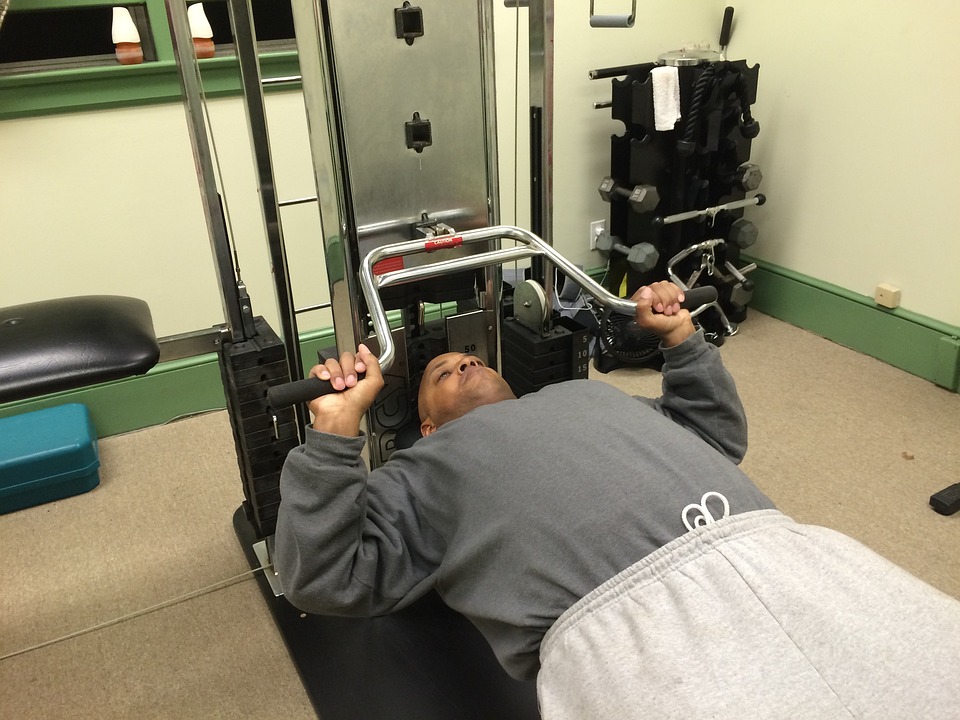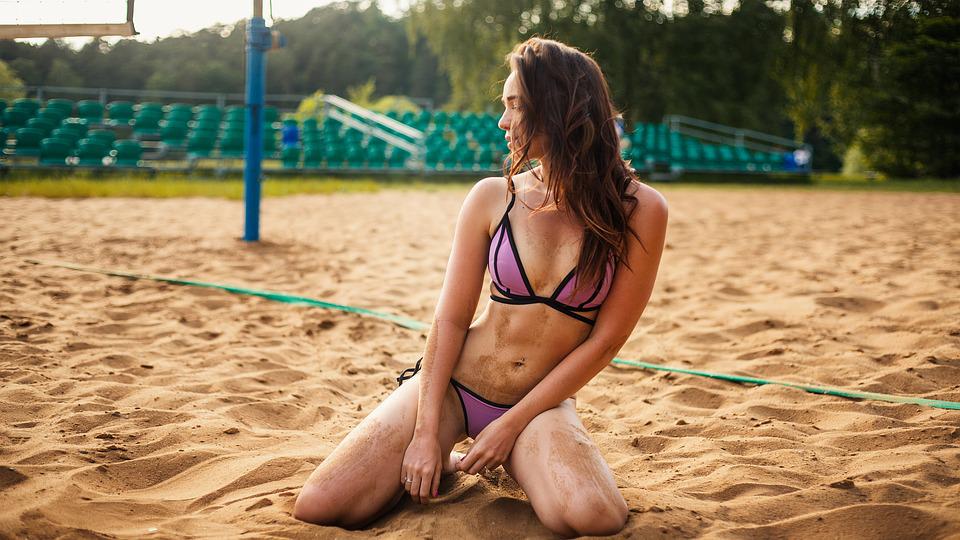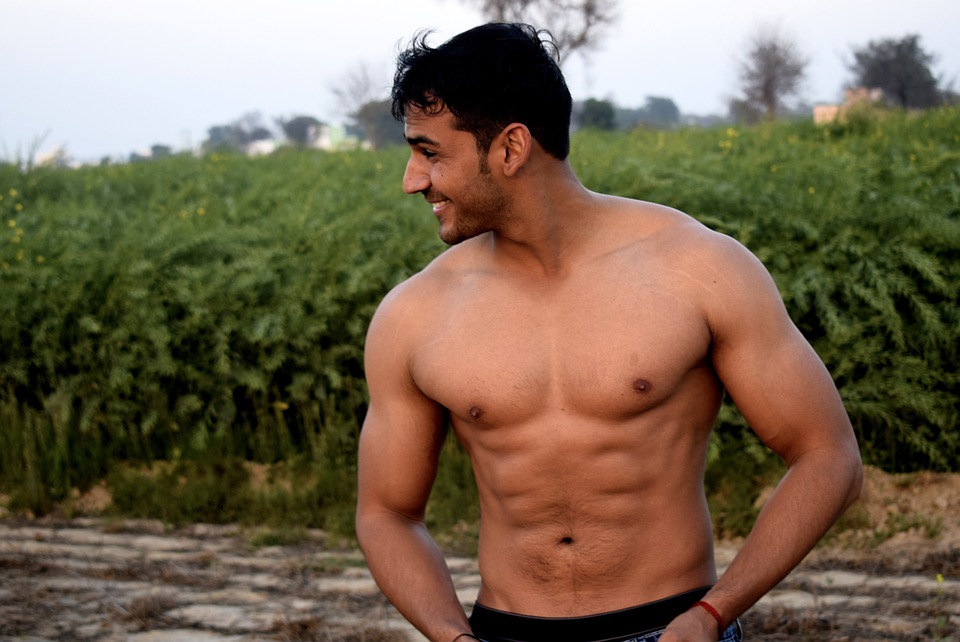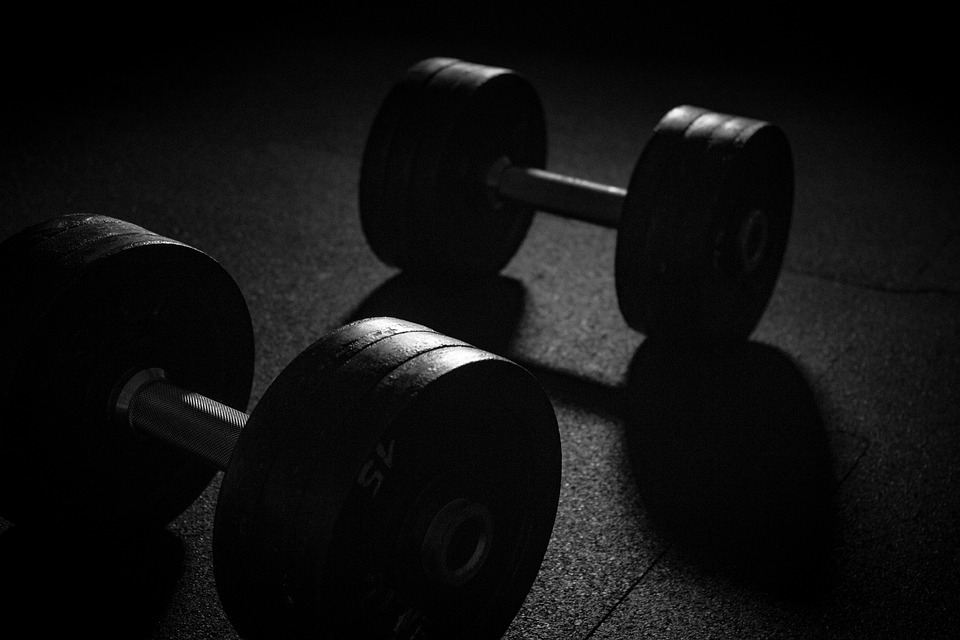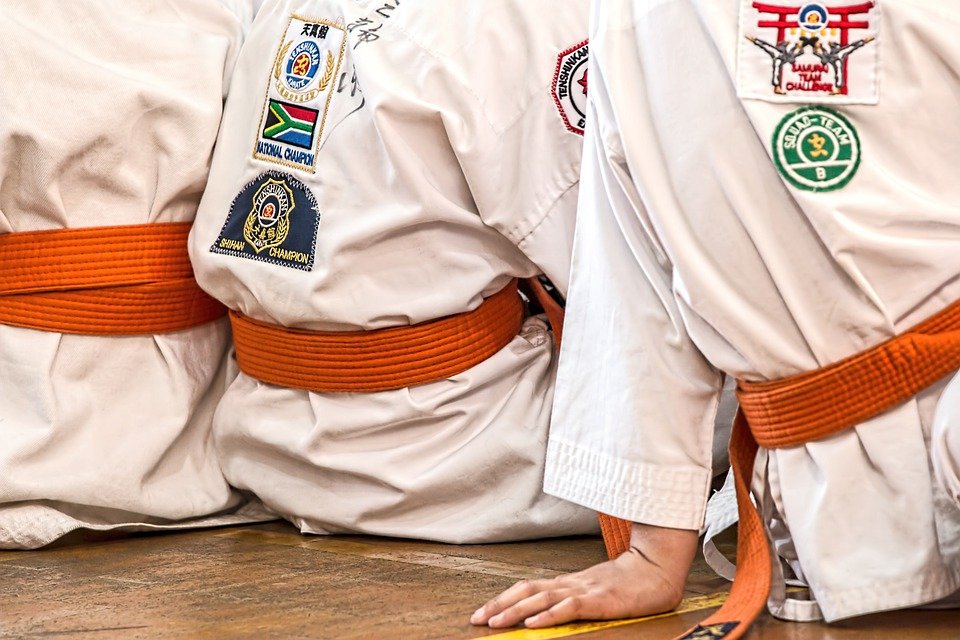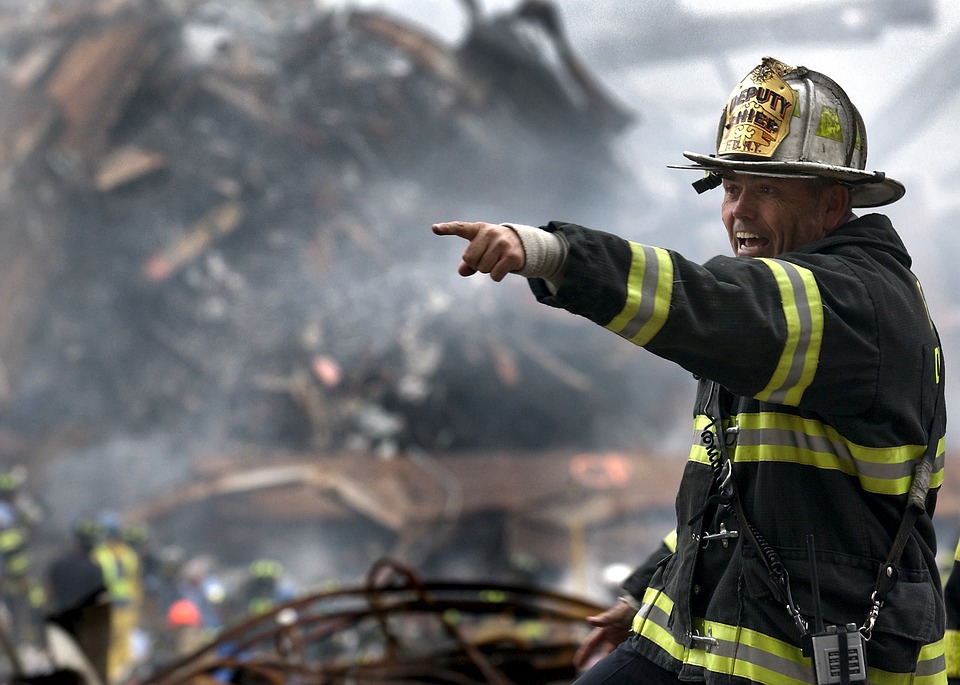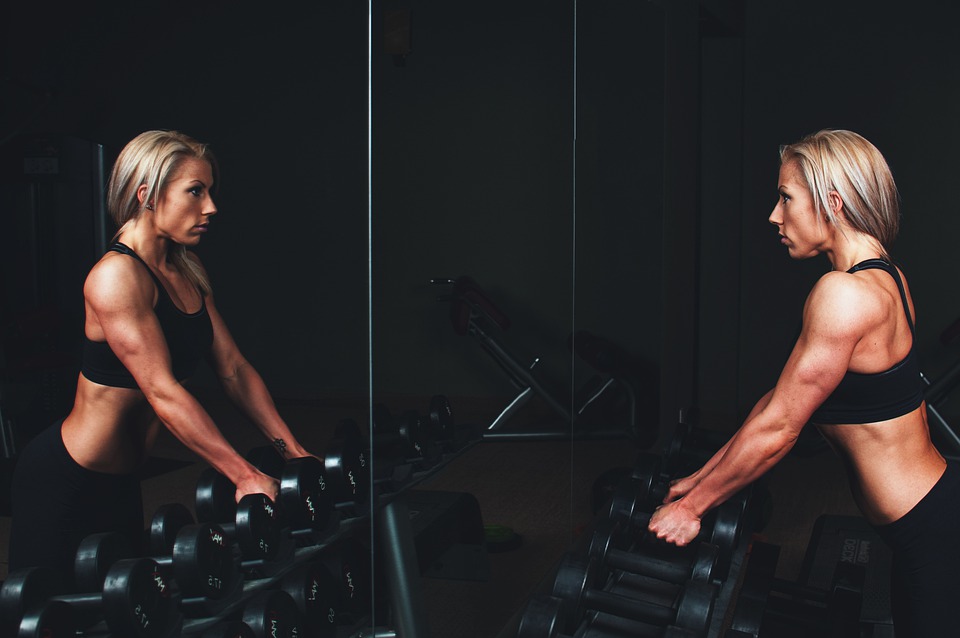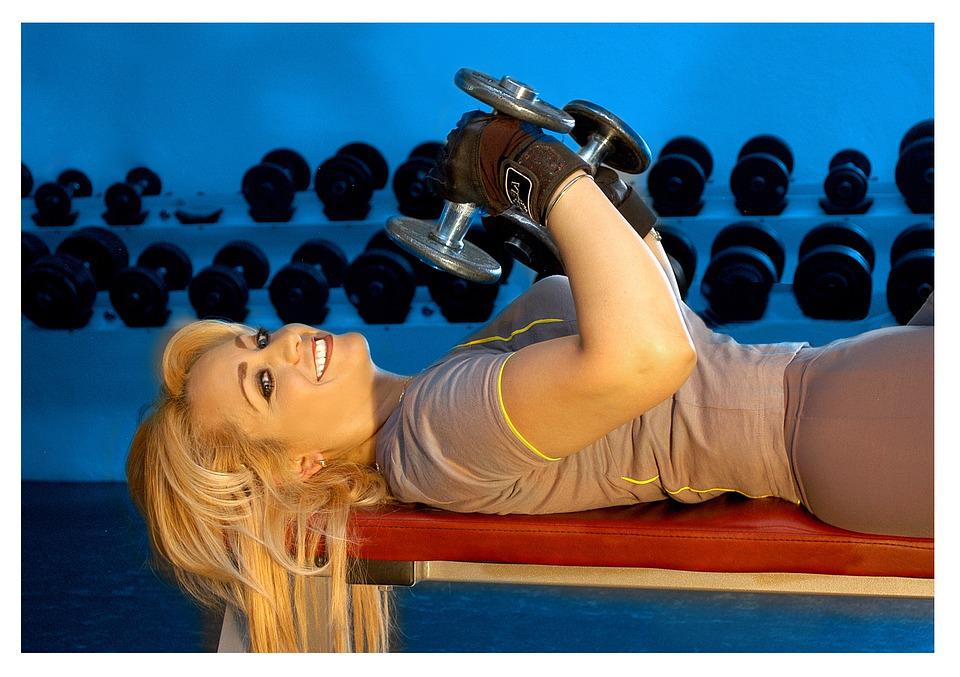
Strengthening your upper body doesn’t require a lot of equipment.
You can train all upper-body muscles using a bench and some dumbbells.
You can maximize the benefits of your upper-body dumbbell workouts by doing the exercises properly, using the appropriate amount of weight, and doing the recommended number of sets and reps.
Doing a circuit of upper-body exercises with dumbbells will help you finish your workouts quicker.
You will learn about all of that and more from this article.
Equipment for a Full Upper-Body Dumbbell Workout
You will need the following equipment to complete all exercises in this upper-body dumbbell workout:
Dumbbells
If you don’t have a full rack of dumbbells at your disposal, you probably don’t have them at home.
The best solution in this case is using a set of adjustable dumbbells or two to three pairs of dumbbells with different weights. If you’re not sure what weights to use, a good starting point for most people is a pair of dumbbells that are 10, 30, and 50 pounds.
A flat or adjustable bench
An adjustable bench will give you extra support while doing overhead pressing exercises.
How to Do This Workout as an Upper-Body Dumbbell Circuit
To make your upper-body dumbbell workouts more time-efficient without compromising performance, do different exercises that train different muscle groups back to back with little to no rest in between (a technique known as “super setting”).
I’m a fan of using antagonist paired sets when I do supersets. This involves going back and forth between two exercises that work different muscle groups. I also take shorter rests between sets than usual so I can finish up and leave the gym sooner.
Essentially, rather than completing your entire workout as one circuit (moving between each exercise with little to no rest in between until you have finished all of your sets), you do several smaller circuits, alternating between just two exercises at a time and resting for longer between sets.
For example, you could do a set of dumbbell bench presses (which trains your chest, shoulders, and triceps), and then do a set of one-arm dumbbell rows (which train your back and the biceps).
This technique allows you to use the sets for one exercise as rest periods for another. For example, your “dumbbell bench press muscles” are resting while your “dumbbell row muscles” are working. As a result, you don’t have to rest as long in between sets, which helps you finish your workouts faster without compromising your strength.
Warming Up for an Upper-Body Dumbbell Workout
Doing a thorough warm-up before your first exercise in each workout accomplishes several things:
- It helps you troubleshoot your form and “groove in” proper technique.
- It increases the temperature and blood flow to your muscles, which can boost your performance and thus muscle and strength gain over time.
You only need to warm up before your first exercise.
A thorough warm-up before your first exercise in each workout is the best way to prepare for the rest of the workout.
Here’s the protocol you want to follow before your first exercise of the workout:
- Estimate roughly what weight you’re going to use for your three sets of the exercise (this is your “hard set” weight).
- Do 6 reps with about 50% of your hard set weight, and rest for a minute.
- Do 4 reps with about 70% of your hard set weight, and rest for a minute.
After warming up, do your hard sets for the first exercise, and then the rest of the exercises for that workout.
The Dumbbell Advantage
You will need to use dumbbells to balance yourself and this will work every target muscle as well as the surrounding muscles. This will help you to work harder and enhance your performance even though you may not be able to lift as much weight. You should do a thorough warm-up so that you are ready for the sets and this will reduce your risk of being injured.
If you have to use both arms independently, you will quickly notice if one arm is weaker than the other. Be ready to work on your weaker side to help keep your arms symmetrical.
Dumbbells give you a longer range of motion than machines. This means you can develop your muscles more fully.
The Best Full Upper-Body Workout with Only Dumbbells
Flat-Bench Dumbbell Press
The multijoint chest exercise is a mass-builder that has been proven to work. You will be able to tell if one side of your chest is stronger than the other, but you will get a longer range of motion with the barbell version because you can press it up and in instead of just up.
Lie on your back on the bench with your feet flat on the floor. Grasp a dumbbell in each hand just outside your shoulders. Press the weights up and together, stopping when they’re an inch or so away from touching. Slowly return to the start.
Do not let the dumbbells touch each other at the top, as this will release the tension on the pectorals and establish a habit of taking a short rest at the top of each repetition. There should be a few inches between the weights in order to not allow the pectorals to fully relax.
One-Arm Dumbbell Row
Training your arms one at a time with this move allows you to use more force than when using both arms at the same time.
Lean over a bench, placing one knee and the hand on the same side of your body on the bench. Place your other foot on the floor next to the bench. Pick up a dumbbell in the hand on the same side of your body as the knee and hand on the bench. Let the weight hang down from your arm with your elbow extended. Pull the weight towards your hip, keeping your elbow close to your side. Pull your elbow as far back as possible, squeeze your shoulder blades together, and then lower the weight along the same path. Repeat for the desired number of repetitions and then switch sides.
Bringing the dumbbell straight up to the shoulder is a mistake. The best line of pull is up and back toward the hip, which provides a greater range of motion and time under tension for the lower lats.
Seated Overhead Dumbbell Press
If you don’t have a bar in your hands, you can emphasize the middle delts more by drawing your elbows back outside your ears. With a barbell, your elbows have to travel forward to clear your face, calling upon more front delts than middle delts.
To ensure proper form, make sure the bench supports your back and that you are holding the dumbbells above your shoulders with your palms faced forward. Be sure to press the weights overhead in an arc and don’t let them touch at the top. Slowly lower the weights back to the starting position.
Continue the downward motion with your arms even after they reach a 90-degree angle; continue until your elbows point toward the floor and the weights are close to shoulder level. This is safer for your shoulders and allows you to use more muscle fibers.
Dumbbell Pullover
The dumbbell pullover is a great exercise because it works both your lats and pecs at the same time. It also uses a full range of motion, which helps to increase muscle growth.
How to:
- While lying on a flat bench with your feet on the floor, hold a dumbbell at one end with both hands and rest it on your chest. Make sure your head is as close to the end of the bench as possible.
- Press the dumbbell over your chest until your elbows are almost completely locked out.
- While maintaining a slight bend in your elbows, lower the dumbbell in an arc over your head until your biceps are next to your ears.
- Reverse the movement and return to the starting position.
Alternating Dumbbell Curl
With an alternating dumbbell curl, you are able to do something called supination at the top of each repetition. This is done by starting with your palms in a neutral grip, and then slowly turning your wrists as you raise the weights. This twisting motion allows for a better peak contraction and overall growth.
Stand up straight while holding a dumbbell in each hand at your sides. Curl one weight toward the shoulder on the same side, keeping your chest up and elbows in tight. Turn your wrist up as you go. Squeeze your biceps at the top, then lower to the start. Repeat with the opposite arm.
The most common way to perform this movement wrong is to try to bring the weight as high as possible, which pulls your elbow away from your side. However, this recruits the front delts and lessens the isolation on the biceps. Keep those elbows back!
Overhead Triceps Extension
The dumbbell overhead triceps extension exercise position the arms above the head, which trains the triceps differently than other pressing exercises. This position fully stretches the long head of the triceps, which research has shown leads to more muscle growth.
How to:
- Sit up straight on a bench.
- Grip one end of a dumbbell using both palms and lift it overhead so that your arms are straight. Your palms should be flat against the end of the dumbbell and facing toward the ceiling.
- Lower the weight until it’s behind your head by bending at the elbow, then straighten your arms and return to the starting position.
Dumbbell Shrug
The range of motion in this exercise is only a few inches. The up-and-down movement should be fluid and controlled, not explosive. You should use a neutral (palms-in) grip with the dumbbells to keep your arms and shoulders in the most comfortable and safest position possible.
To do this exercise correctly, stand up straight holding a dumbbell in each hand at your sides, with your palms facing in. Keep your chest up and abs tight, and shrug your shoulders straight up toward the ceiling, squeezing your traps at the top. Then slowly reverse the motion, letting the weights lower your shoulders as far as possible.
To avoid rolling your shoulders when working your upper traps, keep the motion strictly up and down. This will ensure that you engage the muscles more successfully and prevent strain on the rotator cuff muscles.
Seated One-Arm Overhead Dumbbell Extension
If you raise your arms above your head, you will more effectively use the biggest and most powerful muscle on the back of your arm, the triceps. This is true regardless of what type of equipment you use, whether it be a cable, barbell, or dumbbell.
Do it Right: To do this exercise correctly, sit up straight on an upright bench with your feet flat on the floor. Grab hold of a dumbbell and extend your arm fully overhead. Bending only at the elbow, lower the weight behind your head until your arm forms a 90 degree angle. You should feel your triceps stretch, then press back up to full arm extension and squeeze your triceps hard at the top. Repeat this for the desired number of repetitions, then switch arms.
The two-arm version of the power pointer is just as effective, but keeping your elbows in will reduce stress on the triceps muscles.
Dumbbell Wrist Curl
The wrist curl is positioned at the end of the workout so that the forearms don’t become too tired to provide a good grip for the larger muscles that are trained earlier in the workout.
If you want to do the exercise correctly, sit at the end of a bench with your forearms flat on it. Grasp a dumbbell in each hand with your palms up, allowing the weights to roll to your fingers. Use your wrists to curl the dumbbells back to the start.
To stretch the brachioradialis more effectively, grip the dumbbell with your thumb on the same side as your fingers. This allows you to use a greater range of motion.

